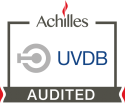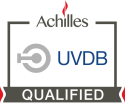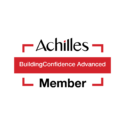A day in the life of a Commercial Diver
What does a day in the life of a commercial diver look like? Not only can we tell you, we can train you, too!
At Kaymac Marine, we make it our policy to hire only an HSE qualified commercial diver. Our commitment to having fully trained divers working on our team has led to us offering the UK’s only Commercial Diver Apprenticeship Scheme, working with local colleges to train our apprentices in the fields Mechanical, Hydraulic and Pneumatic fitting. The knowledge and training gained over the course assists the apprentice to excel in the field of diving which in turn enables Kaymac Marine to deliver exciting projects below water. We do everything we can to ensure that the apprentices we employ onto our Apprenticeship scheme are aware of the demands of this particular choice, so we want to answer the question:
What does a day in the life of a commercial diver look like?
If you don’t have your sea legs, this job definitely isn’t for you. Your typical Commercial Diver works below the surface of water, be it rivers, lakes or the wild open sea, using Surface Supplied Diving Equipment. A fondness for water is essential and a good sense of humour required!
The first task our diving team completes is to survey the weather. When dealing with Mother Nature, all jobs are weather dependent – if the conditions are too rough, then the job will have to wait for another day.
A single commercial diver cannot dive alone; to complete a safe dive they need to work as part of a team built up of a minimum of 5 personnel. All of which must be medically fit and healthy, Kaymac divers are all fit, so much so, that one or two will cycle 20 miles to site. One time, when one of our divers, Peter, cycled to the Swansea barrage site, while diving at the bottom of the docks in darkness with nil visibility, he sent a message up the working line to get a spanner sent down on the messenger line, as he felt up the working line for the spanner, he felt the wheel of his bicycle!
The team assisting the diver will be the supervisor, a diver, a standby diver who provides safety cover for the diver and two Tenders who look after the divers’ needs. All these individuals work together and trust in each other as the diving team needs to be able to work under pressure!
Before any diving operations are undertaken the Supervisor will brief the team on the day’s work. This will include the task and all safety precautions including any hazards and the dive depth which could be up to 50m. The team then gathers all equipment they’ll need for whatever the particular job calls for. In the first instance, the first dive will be to inspect the job and report back to the team above water that the site has been surveyed and is safe for the job to continue. In some cases, a commercial diver will inspect and test the safety and rigidity of structures that are to be worked upon by using underwater photography and testing systems, which isn’t always easy as it’s not always like The Blue Planet episodes and the diver can more often than not be working in nil visibility.
Once the dive site has been approved for work, the divers gear up and make sure they have the tools they will require to begin the job. As a diver you will get dressed by one of your team members, on occasions, and if you have a diver dressing you with a sense of humour, they will put a straw down the neck seal to allow a trickle of water in your suit, after an hour you will be soaking wet!
A vital part of the job as an underwater commercial diver is to always communicate with the team on the surface. As per the HSE training, this is done by using hard wires from the divers helmet to a two way communication box so the diver and the surface team are in constant contact, not only this the surface team will be able to monitor the divers depth with the gauges on the surface. It’s essential for the diver’s depth and dive duration to be monitored to ensure they don’t get the Bends!
Divers must take extra care, to ensure they do not exceed bottom time when free diving, for example 6o minutes maximum at 60ft, divers have been known to continue to decompress at the bar in the pub after work, and sometimes compare gold chains and Rolex watches!
Whatever the job – whether repairing a rig, clearing silt for the rest of the team, bolstering bridge foundations, placing concrete underwater, or constructing a pipeline under the water – the work below the surface can involve repairing, removing or installing equipment and structures of all types, and it’s specialised work.
At Kaymac Marine, each commercial diver we hire not only has their full HSE Diving Qualifications, but we ensure that they also have a complimentary construction skill. This means that each of our divers are instrumental in allowing us to offer our clients flexible turnkey solutions to all their marine engineering problems, whether for time-sensitive projects or for sensitive environments.
Think that this might be the job for you? If you’re aged 16 and in full-time education with 5 GCSEs of grade C and above including Maths and English, why not get in touch with us today to discuss your future role as a commercial diver?
Our apprenticeship scheme involves the following:
- 3 years’ Mechanical Engineering Apprenticeship with hands-on training in maintenance of diving and civil engineering mechanical equipment
- Day release to college
- A 12-week commercial diving qualifications course in South Africa
- 4th year of apprenticeship with a dive team on-site as a ‘baby diver’ to gain experience
On completion of the 4-year apprenticeship, the individual is then a fully skilled tradesman Commercial Diver with 1 years’ experience. Kaymac provides full support, supervision and training for the apprentice in all areas of the diving qualifications.











